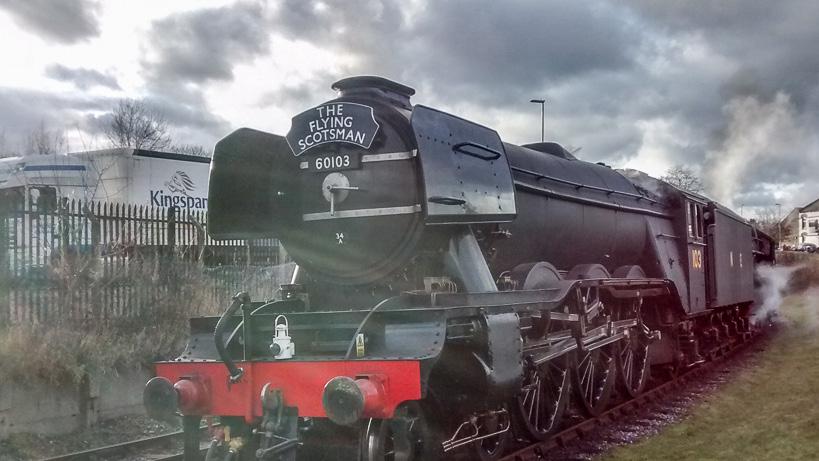
5 minute read
Heywood's rich heritage
With continuing lockdown restrictions, we can, at least, appreciate our localities and an enjoyable stroll through Heywood allows us to investigate some of the area's fascinating history.
The town underwent dramatic growth throughout the 1800’s. Traditional rural work was replaced by textile mills and collieries and with an increased population to provide the workforce, housing and amenities became essential. As a community became established, so did schools, churches, policing, markets and numerous small businesses.
Advertisement
The name ‘Heywood’ comes from Anglo-Saxon, Heghwode meaning ‘a high wood’ which was cleared for farming. The near-by green areas of historic Ashworth and Cheesden are a reminder of Heywood’s past rural days.

In 1286, land was granted to Peter ‘of Heywood’, the family ‘seat’ also becoming the surname of the ruling family. Heywood Hall Manor House existed on Heywood Hall Road until, sadly, demolished in 1956. Descendants of the family include a Westminster magistrate, Peter Heywood, who helped to arrest Guy Fawkes in the Gunpowder Plot of 1605 and another Peter Heywood who, in 1789, was a midshipman on ‘The Bounty’ but left adrift in a rowing boat by the ship’s mutineers for his support for Captain Bligh.
Down Crimble Lane we can view the disused, Grade 2 listed, Crimble Mill. Richard Kenyon built a fulling mill on his farmland in 1761, which was later replaced by the current mill in 1825 and passed through the Kenyon family. Workers cottages were built close-by, though little now remains.
Looking across the field from the lane we have a wonderful view of Mutual Mill, built in 1884 though later extended. This area also borders the ancient farmland of the Fenton family who built a textile empire of local mills including one at, a heavily industrialised, Heap Bridge. The Fenton family formed a bank with a branch in Heywood and were influential in the growth of the local Bamford Chapel and St. Luke’s.

Captain Fold Colliery existed within the area of Crimble Lane from 1842 until 1854, owned by Heywood Coal Co. The pit employed around 50 people but, sadly, experienced a number of accidents and fatalities. Two men being killed in an accident in 1852 hastened its closure and now only a capped shaft exists close to Roeacre Brook.
Our next location is Green Lane and Heywood Railway Station which opened in 1848 to connect with Blue Pits, allowing the railway to run directly from Manchester to Bury. Though closed when the railways were downsized in the late 1960’s, the station has gained a new lease of life with its connection to the East Lancs Railway line which enables steam trains to be seen at the station, once again, including the world famous ‘Flying Scotsman’. One bitterly cold Sunday in 2016, a large, excited crowd enjoyed the spectacle of this refurbished and historic locomotive which visited Heywood Station. The town once had a second railway station, a busy goods depot at Broadfield from 1869 until 1970.
Our walk now takes us to St Luke’s Church where the huge spire dominates the skyline. Built in 1859 to replace a smaller chapel of 1640, the interior includes a stained-glass window commissioned by the Fentons. One parishioner, a local printer, invented a ‘Parsons Pocket Book’, a multi-purpose diary, with relevant ecclesiastical information and dates. This was used by clergy throughout the country from 1910 until becoming outmoded in recent times.
A lion’s head fountain used to adorn the street to the front of the church before being moved to Queen’s Park, where it stands today. Queen Victoria provided money for the park in 1879 to provide an area of recreation for the town’s workers; a commemoration plaque can be seen in the park.
Opposite St. Luke’s is the Civic Hall, former site the Empire, one of Heywood’s four cinemas, the others being the Gem, Palace and Picture-Drome. Many residents can still recall happy memories of these from when a visit to the cinema was a weekly event.
Adjacent, is the public library, opened in 1905 with a financial grant from the wealthy Carnegies; books were requested from the staff who stood behind a counter. The neighbouring War Memorial Gardens were opened in 1926 on the site of the open market which had to be re-sited at top of Hind Hill Street.

Leaving St. Luke’s and on to Hind Hill Street we can see the old Police Station, now office space. Built in 1935 in the Art-Deco style of the day, the interior retains many of the original features. The heavy cell doors are still in place as is a fully intact magistrate’s court. Originally, houses were built near-by for the higher-ranking officers with further housing in Hopwood for the constabulary and families.

Behind the police station, on Fox Street, is the old Public Swimming Baths, with the original plaque of 1891. The building is now a place of worship.
Close-by is St. Joseph’s R.C. Church with its visually striking redcoloured brick work. Opened in 1916, this Byzantine style church replaced a smaller one of 1856.

Heywood has many ‘themes’ to its street names. Some commemorate famous battles, Tudor royalty or the waters of the Lake District. Famous public figures include Admiral Nelson, Richard Cobden, campaigner for Free Trade, Robert Peel, founder of the organised police force and William Pitt, all of whom were prominent figures within the period of Heywood’s industrial expansion, as were the literary giants of Charles Dickens and Manchester novelist, Elizabeth Gaskell who also feature in the town’s street names. All are easily located around the town centre area.
Finishing with more recent history, take a look at the blue plaque on Market Street, unveiled in 2009 to commemorate the Tractor Recording Studio opened in 1968 and funded by the BBC’s Radio One broadcaster, John Peel.

Why not explore more of the town's rich heritage? The town's local library archives are a great place to start.
Paul Brady

